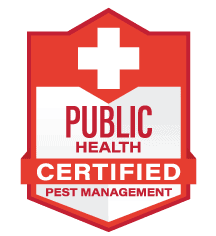Battle Plan 5 Surviving the Infestation – A Complete Manual for Dealing with Bedbugs in Los Angeles

Los Angeles, California
A city known for its sunny skies, iconic Hollywood sign, and unfortunately, a growing issue with bedbugs. In this post, we’ll delve into understanding these pesky critters and provide practical advice on how to deal with them.
Los Angeles, often referred to as the “City of Angels,” is a vibrant metropolis with a diverse population and bustling neighborhoods. However, alongside its cultural richness and economic opportunities, the city faces a persistent challenge: bedbugs. These tiny insects, while not exclusive to Los Angeles, have become a notable concern due to the city’s high population density and transient nature.
What are Bedbugs?
Bedbugs, scientifically known as Cimex lectularius, are small, wingless insects that belong to the family Cimicidae. These nocturnal pests feed on the blood of warm-blooded animals, including humans, by piercing the skin with their elongated mouthparts. While they are not known to transmit diseases, their bites can cause discomfort, itching, and in some cases, allergic reactions.
Why Los Angeles?
The prevalence of bedbugs in Los Angeles can be attributed to various factors. Firstly, the city’s dense urban environment provides ample hiding places and opportunities for bedbugs to proliferate. Additionally, the constant influx of visitors from around the world, drawn to Los Angeles for its tourism and entertainment industry, increases the likelihood of bedbug introduction and spread.
The warm climate of Los Angeles also favors the reproduction and survival of bedbugs. Unlike some regions with harsh winters that naturally limit bedbug populations, the mild temperatures in Los Angeles allow these pests to thrive year-round. Consequently, residents and businesses in the city must remain vigilant in their efforts to prevent and control infestations.
Identifying a Bedbug Infestation
Recognizing the signs of a bedbug infestation is crucial for prompt intervention and containment. Common indicators include:
- Bites: Bedbug bites often appear as small, red welts on exposed areas of the skin, such as the face, neck, arms, and hands. While not everyone reacts to bedbug bites, those who do may experience itching and irritation.
- Blood Stains: After feeding, bedbugs may inadvertently crush or be crushed, leaving behind small blood stains on bedding, mattresses, or upholstered furniture.
- Dark Spots: Bedbug excrement, which resembles tiny black or brown dots, may be visible on sheets, pillowcases, or other infested surfaces.
Prevention Tips
Preventing a bedbug infestation requires a proactive approach to minimize the risk of exposure and entry into your home or business premises. Consider the following preventive measures:
- Inspect Second-Hand Furniture: Before bringing used furniture into your home, thoroughly inspect it for signs of bedbugs, such as live insects, fecal stains, or shed skins.
- Use Protective Covers: Encase mattresses, box springs, and pillows in bedbug-proof covers to prevent infestation and make detection easier.
- Practice Good Hygiene: Regularly launder bedding, linens, and clothing in hot water and dry them on high heat to kill any bedbugs or eggs present.
- Reduce Clutter: Declutter living spaces and minimize harborage areas where bedbugs can hide, such as piles of clothing, stacks of paper, and cluttered furniture.
Eliminating Bedbugs
In the unfortunate event of a bedbug infestation, swift and thorough action is necessary to eradicate the pests and prevent their spread. Here are steps you can take to address a bedbug problem effectively:
- Contact a Professional: Enlist the services of a licensed pest control professional with experience in bedbug management. Professional exterminators have the knowledge, expertise, and specialized equipment needed to eliminate bedbugs safely and effectively.
- Implement Treatment Protocols: Depending on the severity of the infestation, treatment methods may include chemical insecticides, heat treatments, or integrated pest management (IPM) strategies. Your pest control provider will recommend the most appropriate approach based on the specific circumstances of your infestation.
- Follow-up and Monitoring: After treatment, closely monitor your home or business for any signs of bedbug activity. Follow the pest control company’s instructions for post-treatment monitoring and take proactive measures to prevent reinfestation.
Local Resources in Los Angeles
Fortunately, residents and businesses in Los Angeles have access to a range of resources and support services to address bedbug issues:
- Los Angeles County Department of Public Health: The department provides information, guidance, and resources on bedbug prevention and control for residents and property owners.
- Professional Pest Control Services: Numerous pest control companies in Los Angeles specialize in bedbug detection, treatment, and prevention. These licensed professionals can conduct thorough inspections, implement targeted treatments, and offer ongoing monitoring and support.
Take Action Against Bedbugs Today!
Don’t let bedbugs disrupt your peace of mind or compromise the comfort of your home or business. By understanding the threat posed by bedbugs and implementing proactive prevention and control measures, you can protect yourself, your family, and your property from these persistent pests.
If you suspect a bedbug infestation or require professional assistance, don’t hesitate to reach out to local pest control experts in Los Angeles. Together, we can battle bedbugs and create a safer, healthier environment for all residents of the City of Angels!







